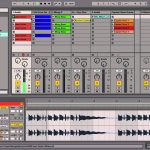The art of making long, linear songs
I’ve always said that long songs are in a way, a genre in themselves. If you think of an artist like Brian Eno with his long meditative songs, or Villalobos with his spaced-out explorations, they all have a way in to people’s hearts who understand the sort of exercise involved in long songs. Since I’m a big fan of long-lasting songs and can’t never get enough of them, I thought I’d write about how I view creating them, and then share a few tips about how to make efficient but meaningful longer tracks.
Why make long songs?
There are as many reasons for making longer tracks as there are people who make them, but I think the main two reasons are:
Immersion: Longer tracks immerse you in a mood and moment, and will sink you into a world that overcomes you.
DJ tools: Some artists who DJ love long tracks because they can layer them to create new ideas. Having a long track lets you focus on carving the two (or more) tracks playing, in order to have content to play with.
Long, linear music in-itself isn’t meant to be listened to with your full attention, but more as something you let take your body over.
Brian Eno explained long songs quite well, saying “[they] shouldn’t be enough to have your full attention nor be boring enough to be forgotten.” In generative music, this means you can include musical ideas, but they shouldn’t be overpowering either.
For North Americans, long songs and extended sets are often misunderstood as bars and clubs close early, and immediate satisfaction is what DJs tend to go for. Sets should be exciting and deliver a response within 5-6 minutes, and therefore music that lets things go on for a while isn’t always fitting the needs of these types of DJs. In Europe for instance, clubs are often open until 6:00am or later, which means the crowd is very patient and understands that tension building is part of the pleasure of listening to a DJ play. Long sets are favoured by many Romanian DJs, who prefer using long, linear music as a way to focus on a mood, rather than an immediate reaction or excitement. The thrill is to see where things will lead to, more so than enjoying “a drop”.
The reason I mention a drop is because resisting the temptation to make one in longer tracks is important, but also because you have to trust the DJ who will use your longer track. Plus, if you intend to make something long, it’s nearly impossible to have exciting things happening for 20-minutes. This is also why long tracks are often hard to swallow for the average listener, as they often seem too “noodly” and pointless, since it can sometimes feel like there’s a lack of direction or a goal in the song.
The main goal of long tracks in sets is to play a supportive role. In a movie, a good secondary character is essential in making the main character seem stronger. Overdoing it or taking up too much space isn’t helpful, and likewise an overly pale or weak supporter is equally useless. Some actors become very solid in secondary roles and are just as in demand as the main characters (yet, that is often overlooked by the general public).
This is why long tracks don’t necessarily need to be interesting, but perhaps, more technical while carrying a strong motif—but the theme should be clear, useful, catchy, and timeless. I’ve played live many times in my life—I’ve always approached gigs with improvisation as my focus. I don’t believe in totally planned sets, as I may have to deal with certain sounds not coming out as planned. In the past, at many shows I’ve ended up carving a groove that fit exactly what the crowd needed, and stretched it over 10 minutes. People wouldn’t get bored because it was what was needed at that time.
One philosophy of long tracks is to provide the DJ with material strong enough to fit into his or her set. You create, then you trust it will be used properly.
Approaching long tracks this way is different than making a track for let’s say, vinyl, which is usually between 5-to-10-minutes long. Using shorter tracks as a model, we can revise the architecture of those tracks and translate them to longer works. Below are some approaches I find to be useful in creating long songs.
One main idea, supported by two secondary ideas.
This approach is the key to having something solid while keeping it simple. What usually ages well is music that is simple, compared to more complicated works. If you know my music, this might seem like a contradiction to my own work as mine is complex, but that’s another topic. I’m talking about music I personally still love, 20 years later.
For example: One main idea could be a melody, supported by a vocal and a trippy and catchy percussion sequence.
Divide the song into 3 sections.
Intro, core, and outro are usually enough to make a song structure. The intro and outro should be easy for a DJ to mix, for bonus points.
Have one new element per section to motivate the listener to keep listening.
This can be an effect, a sound that evolves, a change of tone, a raise of tension, etc. If the listener feels there’s no reason to continue listening, he/she might stop altogether.
Insert an Easter egg.
The idea that you can have one element in a song that happens just once is a bit surprising—it might not be heard on the first listen but makes the listener want to start the song all over to hear it again. The Easter egg is not part of sub-ideas and is not part of the element per section I described above; it’s something on its own.
The first minute dictates the language and pattern of the track that will then repeat.
If you use a pause every four bars, keep that logic until the end (unless you want to be a trickster and play with anticipation).
Structural organization based on part of 32 beats is welcome.
When it comes to long tracks, the logic is slightly similar on certain points as it is to shorter tracks. There’s no written laws but certain tricks make a difference.
Sections are ideally over 4-5 minutes.
Keep in mind that this is a bit of a long shot, but if you structure your music by periods of 4-5 minutes, you’ll create the impression that your song evolves and moves, and that it actually has something worth paying attention to.
The first five minutes dictate the logic of how your song will progress.
In a shorter track, your initial outline of the track might be based on a 1-minute idea, but in a longer track it could be a 5-minute idea. Long tracks benefit from solid structural organization as they are made to be layered.
Try to keep in mind that long sections are pretty much like a 32-beat section.
You can create an A/B pattern where two sections alternate.
Don’t have more than two main ideas and a maximum of four sub-ideas.
Over-crowding your song will be counter-productive if your goal is to make a track that’s meant to have a supportive role.
Experiment. Break rules. Throw an oddball in there.
Long tracks are meant to create space for experimenting, something an artist might not do in a shorter track. For instance, I like progressions over 3 minutes long; sounds that creep in so slowly that you have no idea where they came from or for how long they’ve been playing. One trick I learned from Villalobos is to have a very oddball breakdown, or complete change-over right in the middle of the song. He can do a complete break at 11 minutes for a good 2 minutes where you have no idea what’s happening. He does this mainly because that very moment will be layered over something else he’s playing, and he’ll always find a way to make it work.
Don’t worry about repeating an idea over and over.
Long tracks can be repetitive; they’re not made to be listened to as-is anyway, for the most part.
Years ago I created three songs that were over 20 minutes long—it was an experiment from which I learned a lot. To my great surprise, it was used by many DJs in Berlin back then. Some people would drop the long tracks to be able to go pee in the middle of a marathon set, while others used them to layer and create something special. Now that you’ve read about my own approach to creating long songs, you can listen to how I used the ideas I’ve just described in the track below:
SEE ALSO : Creating a music sketch




Leave a Reply
Want to join the discussion?Feel free to contribute!